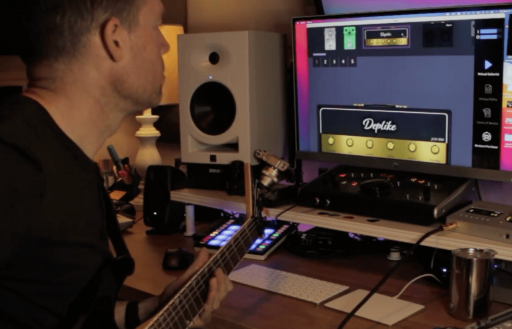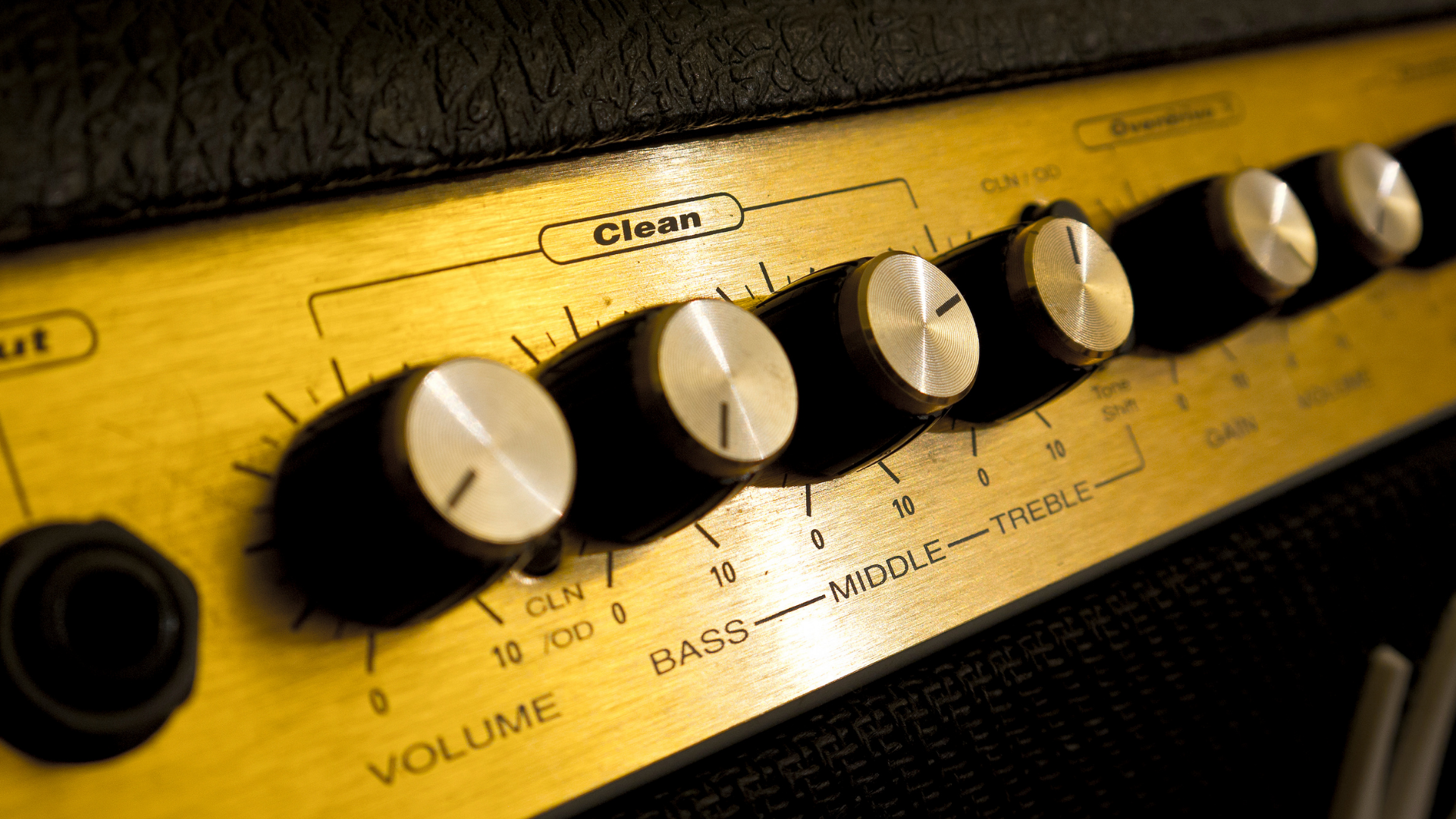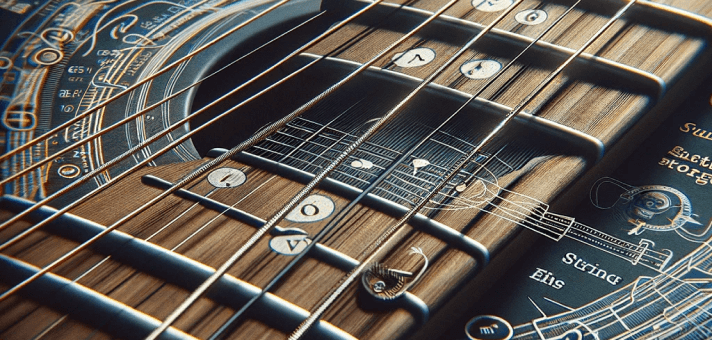How Do Guitar Amps Work?
It’s hard to imagine an electric guitar without a guitar amplifier. An amplifier is an electronic device that helps improve the sound coming out of the guitar. Since amplifiers have become an essential part of playing electric guitar, many people have considered themselves lucky to have one. If you ever tried playing without one, you would quickly realize that it would be hard to hear what you’re playing.
A guitar amplifier is usually equipped with a power supply inside the box or a pre-amplifier. This device will then amplify or suppress the sound coming from the guitar’s pickups. The signal from the guitar’s pickups will travel to the amplifier, where it will be enhanced or suppressed. It can also be connected to a speaker to provide the necessary sound.
There are various ways to enhance the sound coming from the guitar’s pickups. Most commonly, these are using vacuum tubes or transistors.
Signal Breakdown – How do Pickups Work?
Before diving deeper into the details of amplifiers, it’s essential to understand how they work. The signal coming from the guitar is what gets strengthened in the system.
The pickup is made using copper wire and a permanent magnet. In some models, the magnets are placed underneath the strings to focus the magnetic field. When you pluck a string, the force produced by the movement of the magnetic field will cause a disturbance in the field.
Usually, the pickup is made using a permanent magnet, commonly referred to as alnico or ferrite. The pickup’s current is relatively small, which means an amplifier is used to boost it and create a sound that can be heard. When the signal is sent to the amplifier, it will be boosted several times before sending it to the speakers. The output transistors then convert the current into a larger voltage, which will make the guitar sound great.
The two main phases of an amplifier are the pre-amp and the power stage. The former amplifies the audio signal coming from the guitar, while the latter produces a high current signal that can drive the speakers. High-end models can also add a bit of “overdrive” to the sound.
Type of Guitar Amps
There are three main types of guitar amps: Tube Amps, Solid-State Amps, and Hybrid Amps.
Tube Guitar Amps
Before the transistor was commonly used in everyday electronics, tube amps were the only type of equipment available. Despite the evolution of electronic equipment, tubes remain in music equipment. They function similarly to the transistor in terms of amplifying the sound.
A vacuum tube is one type of guitar amps that can enhance the sound coming from a guitar. It can allow the instrument to travel to the speakers. Like a light bulb, vacuum tubes are electronic devices that control current flow through a high vacuum. Usually, valve amplifiers have two switches. The first one is used to turn on, and the second one is used for standby. The main reason why the temperature of the vacuum tubes gets delayed is that they need to warm up before they can function properly. This is because thermionic emission is produced by the heated cathode.
The components of the vacuum tubes are also made of glass, which makes them incredibly fragile. Also, they require a lot of maintenance and repairs. Due to their high energy consumption, the valves are usually outdated.
Solid-State Guitar Amps
Most guitar players probably had a solid-state amplifier before they started playing. These are electronic components that are designed to amplify the signal. They are very popular due to their low cost.
Also, solid-state amplifiers are less prone to damage than their tube counterparts. Since their valves are made of glass, they can be transported easily. In order to improve the quality of the signal coming out of the guitar, solid-state guitar amps use electronic components and transistors. These components then combine to amplify the signal.
The electronic components used in solid-state amplifiers quickly replaced the tubes. The main reason behind this is that the small changes in the input voltage are designed to produce a large change in output voltage. Compared to tubes, the use of transistors consumes less energy. Transistors are commonly used in solid-state amplifiers.
Hybrid Guitar Amps
Hybrid amplifiers combine the features of two previous generations. They do not lose their tubes but keep them in place. As a result, many of today’s models have one or two valves in their preamp. The rest of the circuit is created by using both diodes and transistors.
One of the most interesting features of hybrid amplifiers is that they can supposedly combine the best of both worlds. However, there are many differences between these two.
Guitar Amp Features
Despite how they may look, amplifiers are incredibly simple. The technology used in them has been around for over a hundred years, and they can produce superb sound without a lot of additional features. For instance, the Pro Junior series from Fender has a volume and tone control, but it’s still a part of the company’s line-up.
Some models come with more complex features, such as tone stacks. These allow the user to achieve a wide variety of tone levels. They can also be equipped with various types of reverbs. Understanding the number and type of tubes used to create the tone is very important for choosing a tube amplifier. For instance, some tubes are naturally paired with certain tones, while others are arranged in a way that allows for a wide variety of gain.
Aside from the sound, some amplifiers also have features that allow users to customize their sound. For instance, they can record audio and output signals.
Amp Controls
Most amplifiers have these knobs on their sides or top, and they can be used to control various aspects of the sound. Some models have drive level, middle, and bass controls, while others offer various other options.
The point of an electric guitar is that it can be controlled by the signal from the amplifier. There are many different ways to achieve a sound that’s just right for you.
Tone Controls
Aside from distortion, most guitar amps have tone controls that allow the user to adjust the tone of the instrument. An equalizer circuit is usually placed between the power and preamp components to make certain frequencies and pitches sound louder. The first control is usually a master volume, which is responsible for controlling the amount of sound produced by your guitar amplifier. It is located in the power component of the circuit, and it can be adjusted by turning it one way or the other.
The other controls are usually the bass, middle, and treble. These allow the user to adjust the signal in different areas of the instrument. For instance, turning the bass potentiometer will change the signal in the lower and middle frequencies. Most of the time, the cheap models only have volume, bass, and treble controls. However, on the more expensive models, they can also feature spring reverb. This effect, commonly referred to as spring reverb, is usually added after the preamp has been used.
Distortion
Although solid-state amplifiers can create and enhance the sound, they do not have the same effect as valve-based units, which have a natural distortion. This makes them more versatile and can handle overdriven sound. Many players prefer the lighter tone of solid-state units.
Due to the nature of tube amplifiers, they can produce distortion through various components, such as equalization, power tubes, and preamps. This is why many technicians prefer to use a microphone in front of the speaker. Distortion is a type of sound that occurs when a component of an amplifier is pushed beyond its capabilities. This effect can alter the original signal by removing its peaks and troughs. It can also create harmonic and inharmonic overtones.
Although the terms distortion and overdrive are commonly used to describe the same sound, the former is an extreme version of the former and was created by guitarists using faulty equipment. For instance, a valve can create distortion by pushing its rated maximum beyond its limits. On the other hand, solid-state units can produce hard clipping, which can create a warm and dirty sound. These components are usually clipped using diodes.
What is Virtual Amp, and How does it Work?
A virtual amplifier is an application that combines various devices such as power amplifiers, speakers, and cabinets into a computer environment. It can create a beautiful studio with an extensive selection of equipment and high-quality sound.
With the help of a virtual amp, you can connect various instruments to your computer and use them as virtual guitar pedals. Aside from being able to control the instruments, the software also comes with a variety of effects such as delay, distortion, and overdrive.
One of the main reasons people gravitate toward virtual amps is the variety of effects they can create with the software. On the other hand, they are also incredibly portable and can be bought without any hardware.
Virtual Amp Settings
Depending on the computer that you have, it’s likely that you’ll need a guitar signal plug-in. The most common type of guitar signal plug-in is a 1/4-inch to 1/8-inch jack. These usually come in various forms, such as a jack or a cable with a mini connector. There are also USB connectors, which can be used with a small signal amplifier.
There are various types of plug-ins available, and they can range from simple to expensive. Before you buy, make sure that you try the cheapest one first. If you’re using a simple plug-in, you’ll need to convert the signal from your guitar’s high to low-impedance to allow it to pass through to your computer’s sound card. A guitar with passive pickups produces a weak signal, which means it needs to be driven harder before it can pass through.
The good news is that most powered effect pedals and rack processors will do the job for you, so you don’t need to spend a lot of money on additional components. An EQ or noise suppressor is also ideal since it can provide added benefits by reducing the amount of noise from the pedal. If you’re planning on recording multiple tracks at the same time, then you’ll need a multi-channel audio interface. However, most modern sound cards are powerful enough to keep the latency down. This is especially important if you’re having issues with latency.
Which Type of Amp You Should Choose
There are many arguments about whether or not tubes are better than transistors. In the end, it comes down to what you want from a player and your budget.
Most solid-state and tube guitar amps are only designed for use with the guitar. They come with no speakers, which means that you can’t play the guitar using them unless you have a speaker for them. A combo is a type of amplifier that comes with both a speaker and a box made of wood.
It’s also ideal for high-end equipment that requires multiple speakers in a box. Usually, this combination will come with a stack of several stacks. Aside from the sound of the guitar, various components can be used to enhance the sound of the instrument. One of these is the use of effects and pedals. These can be plugged into a guitar and then connected to an amplifier.
The best amplifiers come with an effect loop, which means that the sound coming from the guitar will be transferred to the pre-amplifier section. After that, the effects will send the sound to the power section. These types of guitar amps are very popular because they act as if all of the pedals are located in the same place.
Summary
In this article, we only talk about the theory behind the various components that make up an electric guitar amplifier. There are so many theories and techniques involved in this field, and I wanted to simplify the process so that everyone can get a good grasp of it.
You might like one type of amplifier over the other, depending on the music genre that you play. For instance, heavy metal players might prefer warm overdrive over heavy distortion. However, if you’re a blues player, you might prefer a more balanced sound.
Now, how to get the guitar tone you want?
Advancing your way throughout the guitar journey is a wholistic process which includes two main pillars: 1. Improving your playing skills; 2. Tweaking the guitar effects and amps to shape your guitar sound.
We all have a guitarist idol that we dig the sound of, right?
Getting the guitar sound of your favorite guitarists/band can be very costly and frustrating. It can require years of expertise to achieve your desired guitar tone.
Don’t worry, you don’t actually have to spend that much money and effort to get any guitar tone you want. Deplike Guitar FX Amp Sim suite plug-in got you covered on all Windows, macOS, iOS and Android devices. All you have to do is plug your guitar and play!





